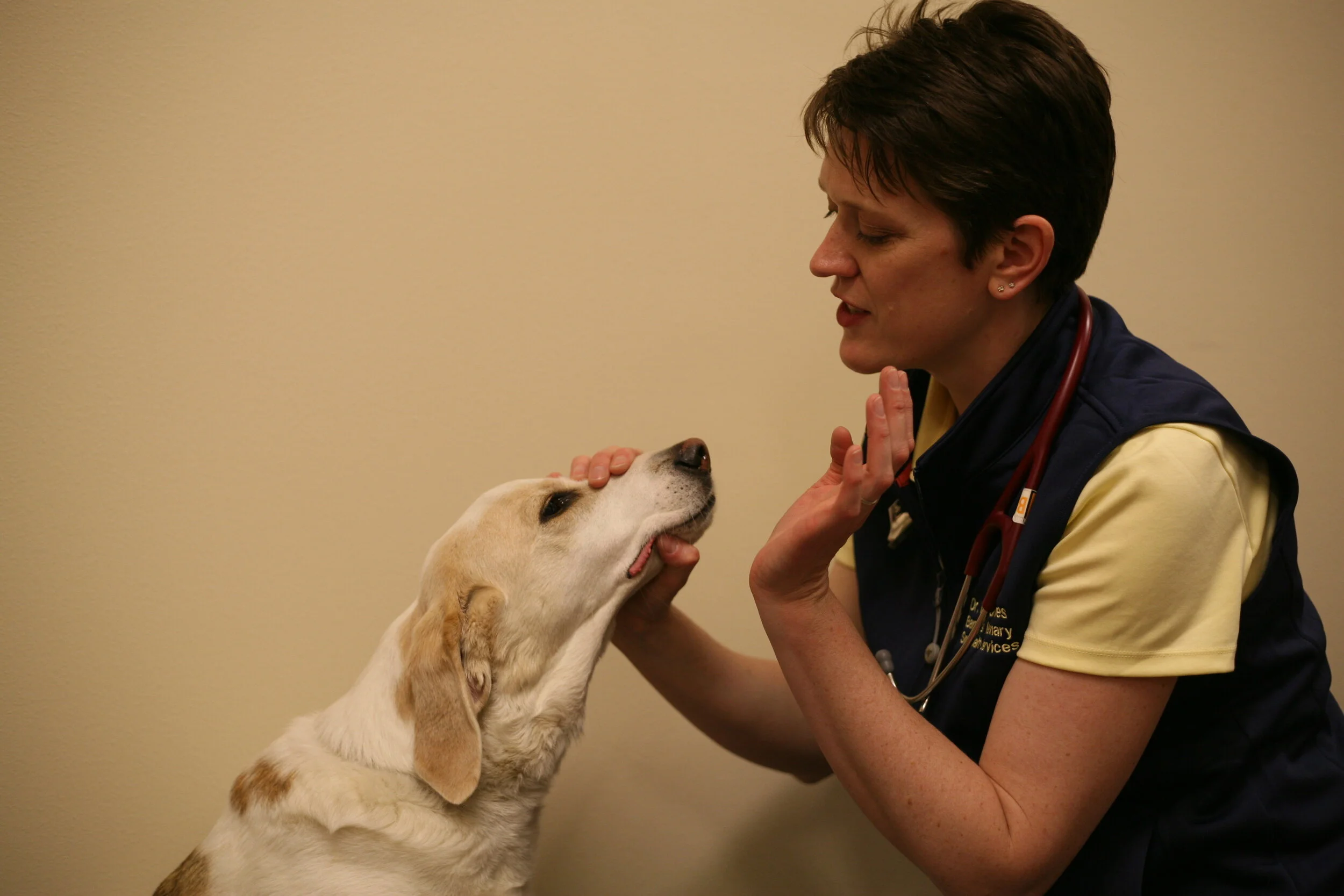** Credit for the amazing hand-drawn image goes to my good friend, and veterinarian Dr. Pam Boutilier.
Anisocoria
Anisocoria is defined as pupil asymmetry and may be seen with ocular or neurologic dysfunction. Malfunction of the sympathetic, parasympathetic, or visual system may result in anisocoria.
Neuroanatomy
Visual Pathway
When light enters the eye, it activates the light receptors in the retina. That information then travels along CN II, crosses in the optic chiasm, and terminates in the thalamus. Optic radiations relay the visual information from the thalamus to the visual cortex in the brain. This pathway can be tested using the menace response test and/or cotton ball testing.
Parasympathetic function: Pupil constriction
The parasympathetic pathway to the eye is a short, two neuron pathway which originates in the midbrain. The two, paired parasympathetic nuclei of CN III (PSNCNIII) send fibers along with the somatic nerves from CN III to the eye. The parasympathetic pathway is best assessed using PLR. When a bright light enters the eye, CN II activates and synapses on the PSNCNIII. The parasympathetic fibers transmit this information to the eye, using cranial nerve III as a conduit, resulting in pupillary constriction.
Sympathetic function: Pupil dilation
The opposing system is the sympathetic system, which causes pupillary dilation. The sympathetic pathway is a three neuron pathway and takes a longer course to the eye compared to the parasympathetic system. In general it goes from the thalamus, through the brainstem and cervical spinal cord to exit in the upper thoracic segments. Fibers then make a U turn and head back to the eye via the jugular groove (don't poke around too much when doing those jugular blood draws!), bulla (ear infection can = sympathetic dysfunction) and then hitches a ride with CN V to make the final leg to the eye. Malfunction anywhere along this pathway will result in a failure of iris dilation in a dark room and a comparatively miotic pupil, typically accompanied with enopthalmus and ptosis.
Putting it together
Let's put this new knowledge to work. If you see a case with anisocoria, how do you decide if it is a parasympathetic or sympathetic dysfunction?
1) Assess the pet in a dark room. Does the eye dilate? If yes --> The lesion is NOT due to sympathetic dysfunction.
2) Asses PLR. Does the eye constrict? If yes --> the lesion is NOT due to parasympathetic dysfunction.
To localize to the appropriate location beyond sympathetic or parasympathetic function requires a full neurologic examination. If you aren't comfortable performing or interpreting a neurologic examination please consider a neurology consultation! I am not comfortable doing a dental...we all have our limitations! :)
If you're interested in digging into anisocoria more deeply, or you have a case with anisocoria consider checking out the following article for a full discussion and more amazing images. Note: I do not receive any royalties or financial impact from this article.
* Barnes Heller H, Bentley E. The practitioner's guide to neurologic causes of canine anisocoria. Today's Veterinary Practice Jan/Feb 2016 pg. 77- 83.
Keep those consults coming; we all get to learn a little bit more with each consult. Have a great week!




